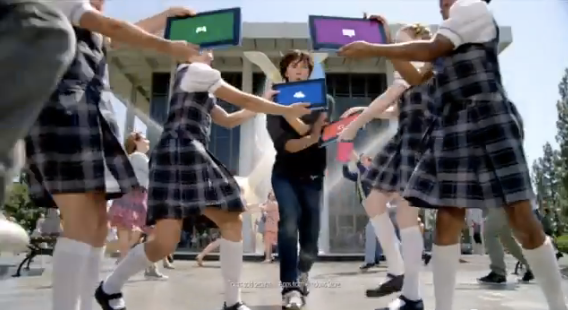Incremental Improvements Make Microsoft Surface Better, But Go-To-Market Strategy Will Determine Success
On September 23rd, Microsoft launched its next generation Surface and Surface Pro devices with a splashy media event in New York City. The improvements to the hardware and software of both models are largely incremental – though that doesn’t obviate the value of these releases, since gradual innovation has long been an industry hallmark, particularly for Microsoft.
WHAT DIDN'T HAPPEN:
Let's start by looking at what didn't happen:
- First, the struggling Surface (which runs Windows RT 8.1, though this fact is downplayed) hasn’t disappeared from the lineup, despite poor uptake and Microsoft’s $900 million financial write-down last quarter. It's been given a sucessor, the Surface 2.
- Second, despite the hype around 7" and 8" Windows 8.1 devices (for example, from Acer today… and many other OEMs in coming months), Microsoft hasn't chosen to enter this market. Given the popularity of smaller tablets, this qualifies as a bit of a surprise.
- Third, there was no radical rethinking. No crazy, innovative, out-of-the-box disruption. That's not necessarily bad, but it's noteworthy.
WHAT DID HAPPEN:
Next, what did happen: Microsoft released updated hardware models and some fairly interesting accessories:
- The new Surface 2 has been smartly designed to look different from its functionally different cousin the Surface Pro, sporting new colors. Surface 2 models start at $449, a price that includes Office Home & Student 2013 RT — a version that also now includes, by popular demand, Outlook RT. It's armed with an NVIDIA Tegra 4 processor, which provides performance and power management improvements.
- The computationally beefier Surface Pro 2 benefits from a more eye-pleasing industrial design, as well as a user-friendly multi-angle kickstand (expanding the various angles for usage). The device enjoys a powerful new chip (with much greater battery life): Intel's Generation Core i5 (Haswell). The release of Windows 8.1 (another incremental improvement over its predecessor) will raise the quality of the user experience for Surface as well. Starting at $899, the Surface Pro 2 is priced more like an ultrabook than a tablet.
- Microsoft has also given ample attention to improving Surface-related accessories — some of which are quite functional for workers. Of particular interest, the Surface Docking Station allows users to use the device on the go, but then dock it to a desktop environment — effectively making it a desktop replacement. And the Power Cover, a new keyboard cover that actually extends battery life, offers value for enterprises, information workers, and even ultra-mobile consumers — though this model does add non-trivial weight to the overall device package (at $199).
THE BIGGER PICTURE: IT'S ABOUT BRANDING AND GO-TO-MARKET
But the true success factors for the Surface line have relatively little to do with hardware itself. Instead, it's all about the strategy. Let’s start with branding. The original Surface television campaign — which one could describe as “vigorous” — featured 20-something dancers who particularly enjoyed jumping atop tables in random places. This branding suggested a fun device that directly competed with Apple’s iPad — never mind the fact that the Surface Pro weighed too much to be a direct substitute and that the tablet market was just beginning to trend toward 7” to 8” devices like Google Nexus 7 and Apple iPad Mini.
More to the point, Surface Pro’s actual strengths as a product lie in productivity (specifically, full Microsoft Office) and legacy compatibility with a variety of desktop-based applications. How did 20-something dancers map to these strengths? (Answer: they didn’t). Rebranding as a prosumer-oriented, productivity focused laptop-replacement — rather than as a tablet — would be a wise direction going forward.
What did these dancers have to do with the Surface value proposition in last year's commercials?

Even more importantly, Microsoft’s go-to-market strategy for Surface will be a key determinant of its success.
- Microsoft needs to grow its enterprise sales channel and support. Let’s face it: For decades, Microsoft has relied upon its OEM partners to sell PCs (and, now, tablets and related devices) to enterprise buyers. While Microsoft has direct sales force capabilities for other products and services, the PC/tablet space isn’t its forte. Microsoft recently announced a significant global expansion of its enterprise channel partnerships, which is an important step. But infrastructure buyers are asking, “Can Microsoft offer me the same level of service, support, and responsiveness as Dell (for example)?" Microsoft’s enterprise-direct Surface sales will depend on building an enterprise sales strategy that incorporates direct sales reps, channel partners, application development services, cross-sales (for example, of Office licenses — at a discount), and world-class, responsive support.
- Microsoft must balance the needs of its OEM partners against Surface in consumer retail. Microsoft now has span of control over two major retail channels: its brick-and-mortar Microsoft Stores (of which there are 77 — 44 full-fledged and 33 specialty) and its Best Buy partnership to manage Windows Stores (which are effectively replacing the PC department in around 385 locations, with 93 more set to open by the holidays). In both cases, Microsoft is pitting its own Surface and Surface Pro devices against the entire panoply of Windows 8.1 and RT devices produced by its competitors… in stores run by Microsoft. Balancing the need to not offend OEM partners while giving Surface the push it needs to succeed with consumers places Microsoft between Scylla and Charybdis.
The new Surface products will offer workers and consumers an incrementally improved user experience, particularly when combined with the forthcoming release of Windows 8.1 on October 18th. But whether Microsoft can turn these second-generation products into a mass market success for enterprise customers, workers, and consumers will depend on its ability to quickly upgrade its branding and go-to-market strategies.
J. P. Gownder is a Vice President and Principal Analyst at Forrester Research. You can follow him on Twitter at @jgownder
